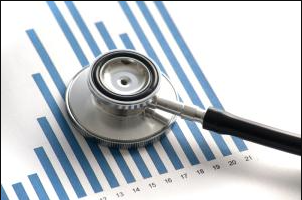
How To Value Dental Equipment When Listing Your Practice For Sale
Read Count : 251
Category : Blogs
Sub Category : Miscellaneous
Selling a dental practice can be a complex process. Also, determining the value of your assets plays a significant role in setting the right price. Potential buyers evaluate dental equipment when considering a practice for sale. Dental equipment is one of the most critical factors in this evaluation. Properly valuing your dental equipment can help you achieve a fair market price. This allows you to sell your equipment at a price that reflects its worth. It ensures a smoother sale process. This blog explores the key steps involved in valuing dental equipment for sale.1.Understand the Importance of Equipment Valuation
Dental equipment represents a significant investment in your practice. Its value contributes to the overall worth of the business and influences buyer interest. When buyers evaluate a practice, they consider: • The condition and usability of the equipment. • The potential cost of repairs or replacements. • How the equipment aligns with current technological standards. Correctly valuing your equipment builds trust with buyers and demonstrates professionalism.2. Inventory All Equipment
Start by creating a detailed inventory of all the equipment in your practice. This inventory should include: • Dental chairs and stools. • X-ray machines and imaging systems. • Sterilizers and autoclaves. • Handpieces and tools. • Computer systems and software. • Lab equipment and other devices. Include the model, purchase date, and any relevant maintenance records for each item. A thorough inventory is essential for accurate valuation. It is also essential for transparency during negotiations.3. Evaluate Equipment Condition
Assess the condition of each piece of equipment. Buyers will examine the equipment's condition. They will assess whether it is functional, needs repairs, or is nearing the end of its lifespan. Categorize the condition as: • Excellent: Like-new, fully functional, and well-maintained. • Good: Minor signs of wear but fully operational. • Fair: Functional but may require some repairs or updates. • Poor: Outdated, damaged, or non-functional. Take photographs to document the condition of key items. This documentation can support your valuation and discussions with potential buyers.4. Research Market Value
Determine the current market value of your dental equipment by researching similar items. Factors to consider include: • The brand and model: Premium brands retain higher value. • Age and depreciation: Equipment typically depreciates over time, but some items may hold value better than others. • Current demand: High-demand items like digital imaging systems may fetch a better price. Consult online marketplaces and equipment dealers for market insights. Industry reports can also provide valuable information.5. Consider Depreciation
Depreciation significantly impacts the value of dental equipment. The IRS often provides depreciation schedules for dental equipment, but these may not align perfectly with market value. To account for depreciation: • Use a standard depreciation rate (e.g., 10-15% per year). • Adjust for wear, obsolescence, and maintenance history. • Highlight recent upgrades or replacements, as these can boost value. Buyers are less likely to pay full price for older or heavily used equipment. Realistic expectations are key.6. Highlight Equipment That Adds Value
Certain equipment can increase the appeal of your practice. These include: • Advanced Technology: Digital imaging systems, CAD/CAM units, and lasers are highly desirable. • Eco-Friendly Equipment: Devices with energy-saving features may attract eco-conscious buyers. • Well-Maintained Basics: Reliable, well-maintained dental chairs and tools signal functional practice. When listing your practice, highlight the features and benefits of each item. Justify the value of these items by emphasizing their benefits.7. Obtain a Professional Appraisal
Hiring a professional appraiser can provide an unbiased evaluation of your dental equipment. Appraisers specialize in assessing: • The fair market value of equipment. • The impact of current market conditions. • Replacement costs versus resale value. An appraisal adds credibility to your listing and reassures buyers that your valuation is accurate.8. Bundle Equipment in the Overall Practice Value
Dental equipment is a critical component. Buyers evaluate the practice as a whole. Bundle the value of equipment with other assets, such as: • Patient base and goodwill. • Office space and lease terms. • Revenue and profitability metrics. By presenting a complete package, you make your practice more attractive to potential buyers.9. Prepare for Buyer Questions
Buyers will likely ask detailed questions about your equipment, including: • Maintenance history and service records. • Warranty status for newer items. • Compatibility with modern dental procedures and software. Be prepared with thorough documentation and honest answers to address these concerns.10. Plan for Upgrades or Repairs
Outdated or poorly maintained equipment can negatively impact your practice's sale. Consider upgrading or repairing it before listing your practice. Investments in key areas can: • Increase buyer confidence. • Enhance the overall valuation of your practice. • Reduce negotiation points about discounts for equipment replacement. However, balance these costs with the expected return on investment.Conclusion
Valuing dental equipment is a crucial step when listing your practice for sale. Inventorying assets is the first step. Then, assess the condition, research market trends, and work with professionals to determine the value of your equipment. High-tech features, well-maintained fundamentals, and practical value are key to attracting the right buyers and ensuring a smooth transaction.
Comments
- No Comments

